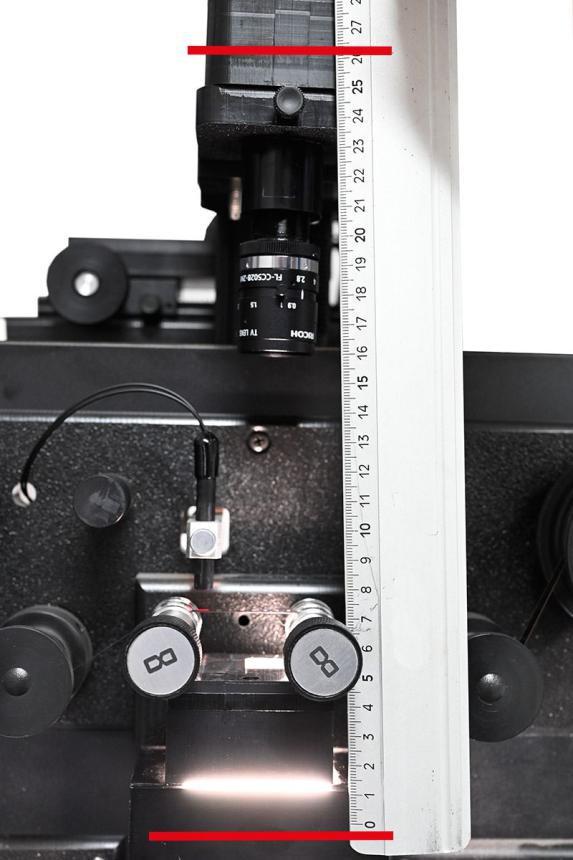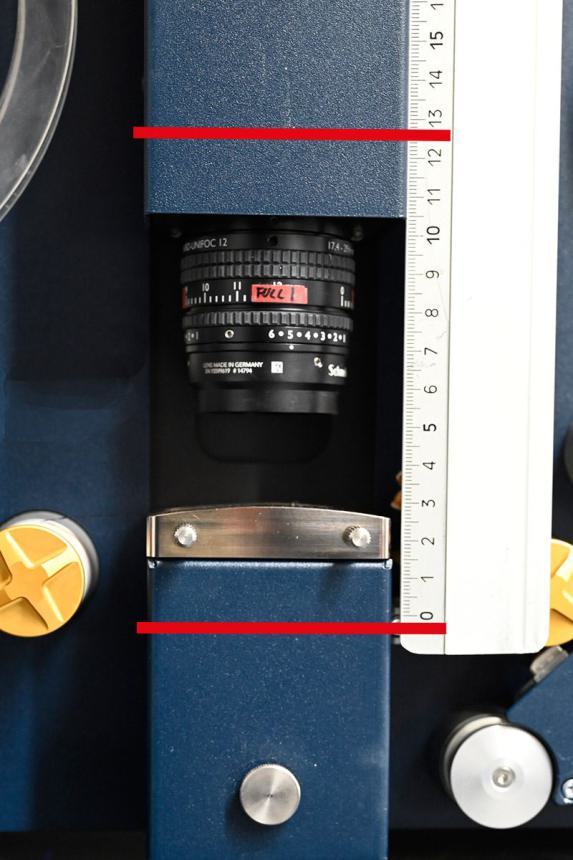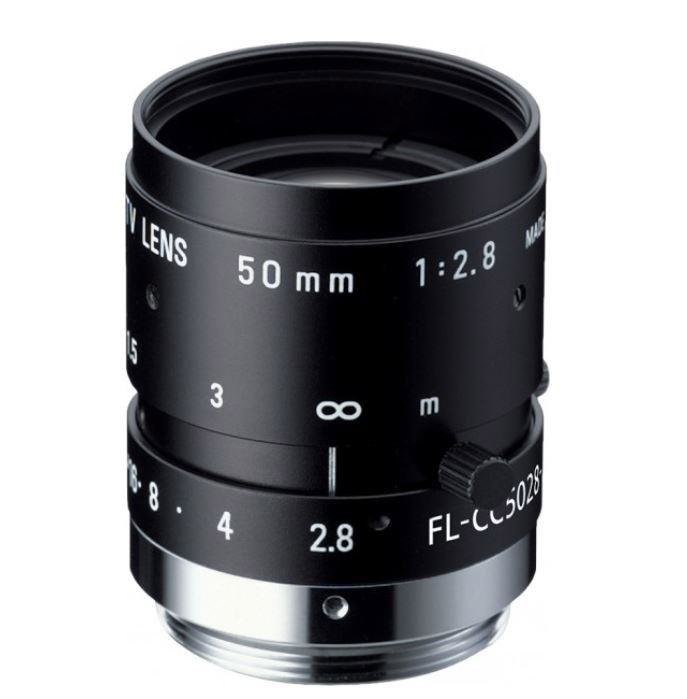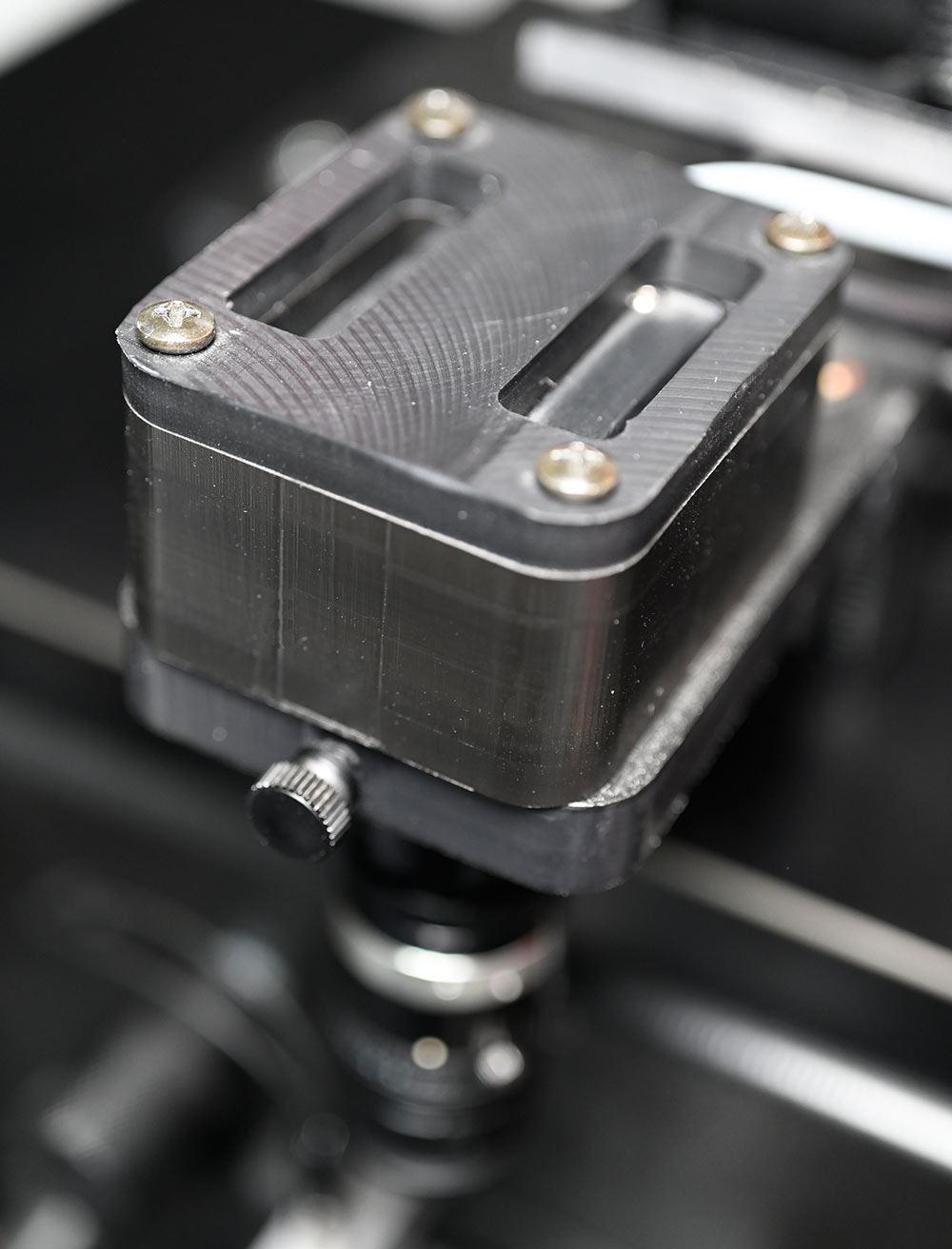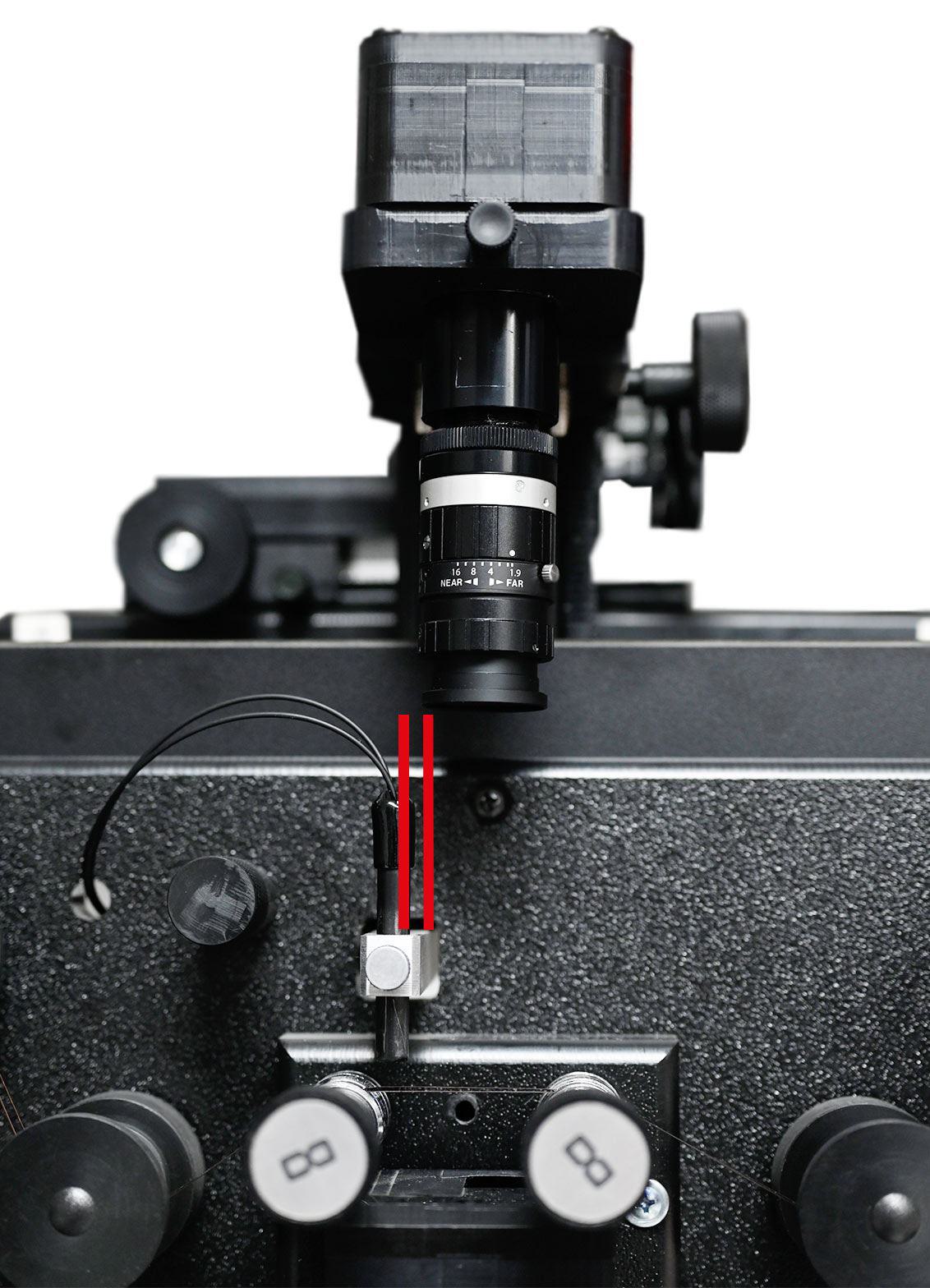Information on the "Mark-I Universal" can be found HERE
What is the big difference between mark and other devices?
Probably the most important difference is the light source with permanent illumination instead of flash illumination and all the resulting disadvantages.
Why do other manufacturers use the triggerd flash light?
1. It is approx. 4x brighter than a permanent LED with the same wattage
2. The lighting time is very short. This means that the exposure time is also much shorter - there is no blurring due to the permanent film transport.
Even with permanent lighting, the exposure time must be short enough to avoid motion blur caused by the film transport. However, if the amount of light does not permit such a short exposure time, the camera automatically increases the sensitivity of the sensor. This in turn leads to strong noise in the image (see test images). This is exactly what happens with the "Mark II". However, Moviestuff offers a "denoise" function in the software in order to obtain a (just barely) usable image quality. However, this only reduces the noise using a soft focus - which of course has a negative effect on the overall sharpness of the image. This LED is not only far too weak for this application, it also only has a CRI of 70, which is a very poor value. The colors that are present in the film are no longer displayed correctly. A value of at least 90 CRI is recommended for a photo-optical system.So, instead of installing a decent light source (would cost about 50 € more) to achieve a good image quality, Moviestuff tries to improve the poor image quality afterwards. That can't work.
| Moviestuff | Moviestuff |
|---|---|
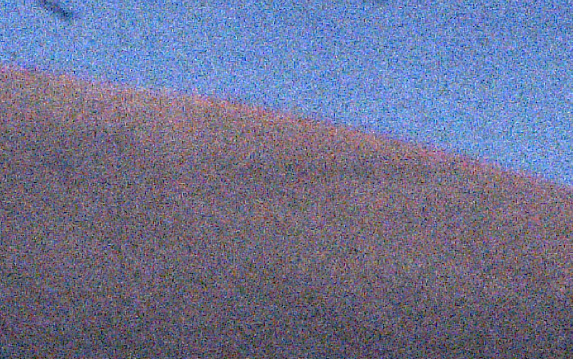 | 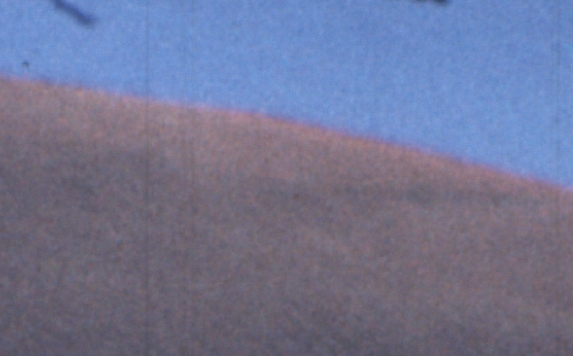 |
| At 210 milliseconds, as the exposure time of the sensor is set for Mark II, the image drawn in the frame has no blurring due to the film transport - but it has a very strong sensor noise. | At 32000 milliseconds, the recorded image no longer has any sensor noise. Due to the long exposure time, however, the recorded image would be completely blurred. |
Summary
With the existing hardware you cannot record a noise-free picture. In an image processing process, you can only ever achieve the quality of the worst component, which in the case of the "Mark II" is the light source. Unfortunately, replacing only the light source does not achieve the maximum achievable quality. There are other factors that are directly related to this:
